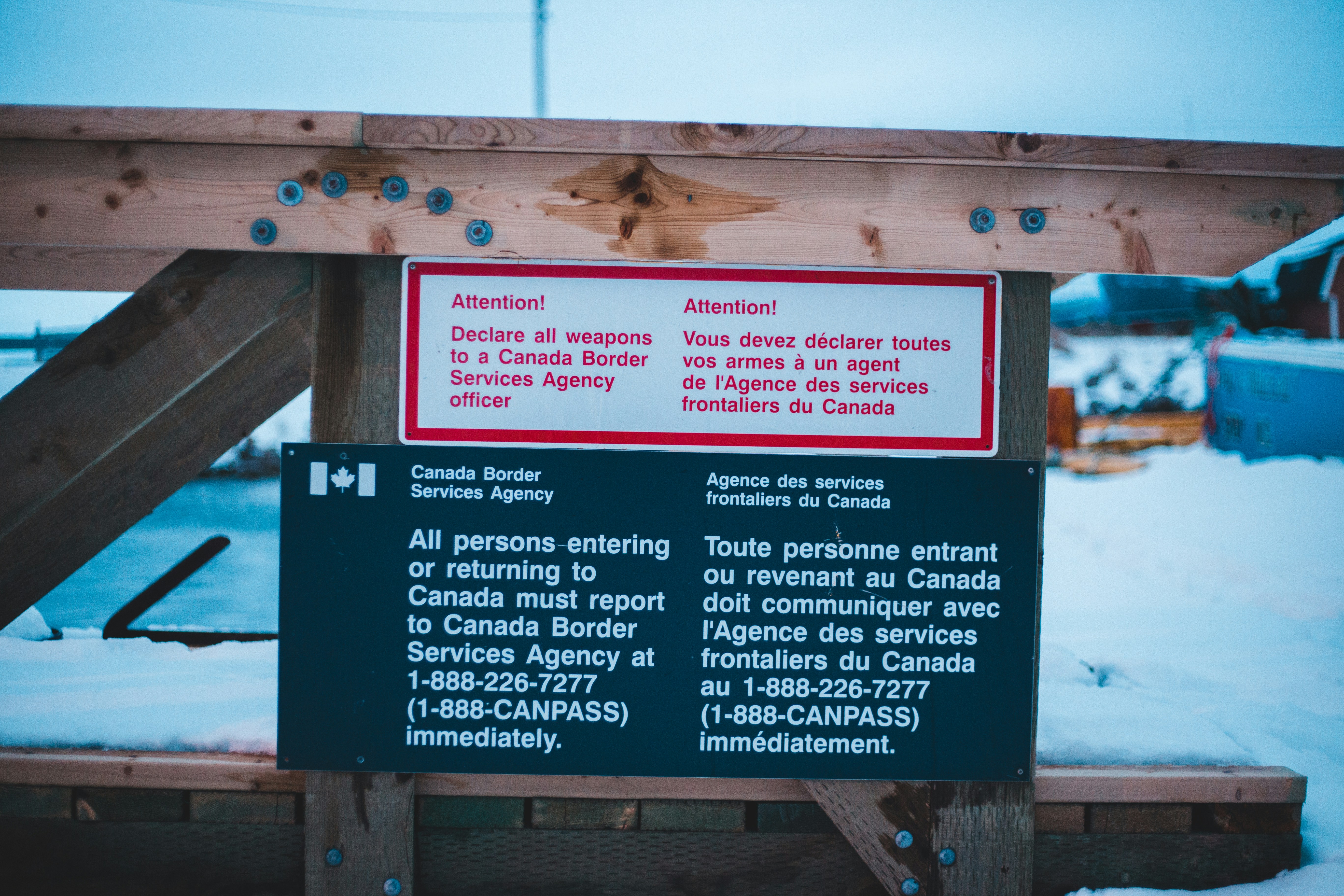10 Easiest Ways to Migrate to Canada in 2025

Introduction to Canadian Immigration
Canada has long been regarded as a welcoming destination for individuals seeking new opportunities and a better quality of life. As of 2025, its immigration landscape remains open and diverse, providing numerous pathways for newcomers to integrate into Canadian society. The country emphasizes inclusivity and cultural diversity, making it an appealing option for those wishing to migrate. With its strong economy, vibrant cities, and robust social services, Canada continues to attract prospective immigrants from all corners of the globe.
Understanding the various immigration pathways available in Canada is vital for anyone contemplating a move. These pathways can differ in terms of eligibility criteria, application processes, and processing times, reflecting the varying needs and circumstances of different applicants. In 2025, individuals can choose from options such as Express Entry, Provincial Nominee Programs, Family Sponsorship, and pathways tailored for international students and skilled workers. Familiarity with these pathways can significantly enhance one’s chances of a successful immigration experience.
It is also important to address some common misconceptions about Canadian immigration. For instance, many believe that the process is overly complex or that it favors certain nationalities over others. However, Canada’s immigration system is designed to promote fairness and equality, with criteria based primarily on skills and qualifications relevant to the Canadian labor market. Furthermore, the system is continually updated to address labor shortages and demographic changes, ensuring that Canada remains an attractive destination for diverse migrant populations.
In light of its longstanding commitment to welcoming newcomers, Canada’s immigration policies are expected to evolve further to accommodate the demands of a changing world. With the right information and preparation, individuals can navigate the immigration process confidently and capitalize on the myriad opportunities that Canada has to offer.
Express Entry System Explained
The Express Entry System is a comprehensive immigration system introduced by the Canadian government to facilitate the migration of skilled workers. This system streamlines the immigration process by utilizing a points-based approach to select candidates based on their skills, work experience, and qualifications. The Express Entry serves as a foundational gateway for individuals aspiring to gain permanent residency in Canada, making it a vital option for skilled immigrants in 2025.
To be eligible for the Express Entry, candidates must meet specific criteria that generally include possessing a valid job offer, proficiency in one of Canada’s official languages, and a minimum level of education. Furthermore, applicants are required to provide evidence of their work experience, which must align with the job duties outlined in the National Occupational Classification (NOC) system. It is important to note that not all occupations are in demand; hence, understanding the current labor market trends in Canada can significantly enhance an applicant’s chances of receiving an invitation to apply for permanent residency.
The Comprehensive Ranking System (CRS) assigns scores to candidates based on the information provided in their profiles. Factors such as age, education, language proficiency, and Canadian work experience contribute to the overall score. Higher scores increase the likelihood of receiving an invitation during periodic draws conducted by the immigration authorities. Creating a profile within the Express Entry system requires careful compilation of personal credentials, including educational documents and proficiency test results. The timelines for receiving an invitation can vary, but candidates often find that the entire process, from profile creation to approval of permanent residency, can take as little as six months under ideal circumstances.
Provincial Nominee Programs (PNP)
Provincial Nominee Programs (PNP) are designed to enable Canadian provinces and territories to select immigrants who meet their specific labor market needs. This initiative allows provinces to address skill shortages and contribute to their local economies by nominating individuals for permanent residency who possess the skills, education, and work experience required in those areas. Each province has its own PNP with unique eligibility criteria and application processes, which can greatly vary across the country.
To apply through a PNP, prospective immigrants must first determine which province aligns with their skills and experience. Each province provides a distinct set of programs, often categorized by various streams targeting skilled workers, international graduates, and business migrants. For instance, British Columbia might focus on tech workers, while Manitoba may prioritize family connections or community involvement. Therefore, individuals should research the unique requirements and opportunities offered by each province before embarking on their migration journey.
The application process typically begins with submitting an Expression of Interest (EOI) to the province of your choice. If selected, applicants receive a provincial nomination, which significantly strengthens their permanent residency application. A nomination not only enhances an applicant’s Comprehensive Ranking System (CRS) score in Express Entry but also provides a pathway to apply for permanent residency through the federal government. Interested candidates are encouraged to maintain thorough documentation and stay informed about the various streams as policies and needs may change over time.
Ultimately, the PNP offers a viable route for those seeking to migrate to Canada, showcasing the diversity of opportunities across different provinces. By aligning personal qualifications with provincial demands, immigrants can enhance their chances of successful settlement and integration into Canadian society.
Family Sponsorship Opportunities
Family sponsorship represents one of the most viable avenues for individuals looking to migrate to Canada. This immigration pathway enables Canadian citizens and permanent residents to sponsor eligible family members, facilitating their relocation and integration into Canadian society. The government of Canada recognizes the significance of family unity and has established programs to support this objective.
To be eligible for family sponsorship, the sponsor must be at least 18 years of age, be a Canadian citizen or a permanent resident, and demonstrate adequate financial capacity to support the sponsored individual when required. The sponsorship can apply to a variety of familial relationships. Primarily, this includes spouses, common-law partners, dependent children, parents, and grandparents. Siblings, nephews, and nieces may also be considered under particular conditions, especially if the potential sponsor lacks a nuclear family.
The application process for family sponsorship begins with the submission of an application package, which consists of several forms that ensure both the sponsor and the applicant fulfill necessary criteria. It is crucial for sponsors to provide proof of their relationship with the applicant and to substantiate their financial ability to support them without resorting to social assistance. Documents such as birth certificates, marriage certificates, and financial statements play a key role in this process.
The duration for processing family sponsorship applications can vary significantly. Generally, it takes several months to over a year, depending on the specific circumstances and the Ministry of Immigration’s current workload. Applicants are encouraged to keep communication lines open with immigration officials and to promptly respond to any requests for further information. Successfully navigating the family sponsorship route can ultimately lead to a more seamless and rewarding migration experience for families wishing to reunite in Canada.
Student Pathway to Immigration
The student pathway to immigration is increasingly recognized as a viable route for international students aspiring for permanent residency in Canada. This option not only allows students to pursue high-quality education but also provides them with unique opportunities to transition into the workforce and ultimately apply for Canadian permanent residency. To embark on this journey, prospective students must first obtain a study permit, which is essential for their educational experience in Canada.
Acquiring a study permit requires students to be accepted by a designated learning institution (DLI) in Canada. This process involves submitting various documents, including proof of financial stability to support themselves during their studies. Once the study permit is granted, students can enroll in their chosen program, benefiting from Canada’s diverse educational landscape, which promotes innovation and critical thinking.
One of the significant advantages of studying in Canada is the option to apply for a post-graduation work permit (PGWP) upon completing their studies. The PGWP allows students to work in Canada for a duration equivalent to their study period, up to a maximum of three years. This experience is invaluable, as it provides students with the chance to gain Canadian work experience, which can significantly enhance their profiles when applying for permanent residency through programs such as the Canadian Experience Class (CEC).
Furthermore, studying in Canada facilitates cultural integration and networking opportunities. Students become part of Canada’s diverse multicultural society, connecting with local communities and building relationships that may prove beneficial in their future professional endeavors. The combination of education, work experience, and cultural understanding positions international students favorably in their pathways to migration, making the student pathway one of the easiest and most effective methods to secure permanent residency in Canada.
Work Permits and Employer-Sponsored Immigration
For individuals considering migration to Canada in 2025, work permits and employer-sponsored immigration programs present viable pathways to establish residency. Generally, obtaining a job offer from a Canadian employer is a crucial first step toward the immigration process. Canadian employers can sponsor foreign workers through various work permits, effectively bridging the gap between employment opportunities and permanency in the country.
There are two primary categories of work permits: employer-specific and open work permits. Employer-specific work permits are tied to a particular job offer from a named employer, which must first obtain a Labour Market Impact Assessment (LMIA) to prove that there are no suitable Canadian citizens or permanent residents available for the position. In contrast, open work permits allow individuals to work for any employer in Canada, providing greater flexibility. However, these permits are generally accessible to specific groups, such as international students and spouses of skilled workers.
The LMIA process is integral to employer-sponsored immigration, as it assesses the potential impact of hiring a foreign worker on the local job market. Employers must demonstrate that hiring a foreign worker will not negatively affect employment opportunities for Canadians. Therefore, it is crucial for prospective immigrants to target industries where there are labor shortages, as this increases the likelihood of obtaining a positive LMIA.
For those seeking work opportunities, leveraging professional networks and online job boards can be invaluable. Websites such as Job Bank, LinkedIn, and industry-specific forums often list openings that align with foreign workers’ qualifications. Additionally, attending job fairs and networking events can yield potential leads, enhancing one’s prospects in securing employment and subsequent work permits for migrating to Canada.
Start-Up Visa Program for Entrepreneurs
The Start-Up Visa Program is a unique initiative designed for innovative entrepreneurs looking to establish their businesses in Canada. This program promotes the growth of start-ups within the country, fostering economic development and job creation by attracting talented individuals. To qualify for this visa, applicants must meet specific eligibility criteria. Notably, there must be a qualifying business in which the applicants hold essential roles. This business should be incorporated and have the potential to create jobs for Canadians and compete globally.
One of the key requirements for the Start-Up Visa is obtaining support from designated Canadian investors. These can include venture capital funds, angel investor groups, or business incubators authorized by the government. The support typically involves securing a minimum level of investment or endorsement, ensuring that the business idea is viable and has the potential for success in the Canadian market. Furthermore, applicants must demonstrate proficiency in either English or French, providing evidence of language skills essential for effective communication and integration into the business environment.
The application process begins with obtaining a letter of support from a designated organization, which must be included with the visa application. Once the application is submitted, it is evaluated based on several factors, including the innovation, feasibility, and potential impact of the proposed business. Among the benefits of the Start-Up Visa Program is the possibility of fast-tracked permanent residency. Entrepreneurs who receive the visa can become permanent residents in Canada within a remarkably short time frame, allowing them to focus on their business endeavors with less bureaucratic hindrance. This program not only empowers entrepreneurs but also enhances the overall entrepreneurial ecosystem in Canada, promoting a culture of innovation.
Quebec Immigration Program Insights
The province of Quebec offers a range of immigration programs tailored to meet its unique socio-cultural and economic needs. Among the prominent pathways for potential immigrants are the Quebec Skilled Worker Program and the Quebec Experience Program, each having distinct criteria and advantages compared to federal immigration routes.
The Quebec Skilled Worker Program (QSWP) is designed for individuals with a particular skill set who wish to settle in Quebec, emphasizing the province’s labor market demands. Candidates are assessed based on various factors, including education, work experience, age, and proficiency in French. Unlike the federal system, Quebec holds a higher value on knowledge of the French language, reflecting the province’s cultural identity. Individuals who demonstrate strong French language skills may receive additional points in the selection process, enhancing their chances of successful immigration.
In addition to the QSWP, the Quebec Experience Program (PEQ) facilitates the transition of individuals already residing in Quebec, either as students or temporary workers, into permanent residents. This program recognizes the adaptation and contribution of these individuals to Quebec society. Potential applicants must demonstrate proficiency in French and show that they have either completed a recognized educational program in Quebec or have relevant work experience in the province.
Moreover, Quebec also provides other specialized pathways, such as the Business Immigration Program, which supports entrepreneurs and self-employed individuals. This program focuses on attracting business professionals who can contribute to Quebec’s economic growth. Each of these programs presents unique opportunities for skilled workers, students, and entrepreneurs to live in a province known for its rich culture, favorable lifestyle, and vibrant communities.
In conclusion, the Quebec immigration programs serve as effective pathways for individuals seeking to integrate into the province while contributing to its diverse cultural fabric and economy. Prospective immigrants should carefully consider the requirements of each program and ensure they meet the necessary criteria to enhance their likelihood of success in their immigration journey.
Beyond Basics: Additional Routes to Immigration
In addition to the widely recognized pathways to Canadian immigration, there exist several lesser-known yet viable options that prospective migrants can explore. Understanding these alternative routes can provide more flexibility and opportunities for those looking to settle in Canada, particularly in 2025.
One significant immigration program is the Atlantic Immigration Pilot Program (AIPP), designed to attract skilled workers and international graduates to the Atlantic provinces of Canada. This initiative focuses on addressing labor shortages in regions such as Nova Scotia, New Brunswick, Prince Edward Island, and Newfoundland and Labrador. To qualify for the AIPP, candidates need a valid job offer from an employer in one of the participating provinces, along with relevant work experience and educational credentials.
Another noteworthy program is the Rural and Northern Immigration Pilot (RNIP), aimed at addressing the specific labor needs of smaller communities across Canada. This pilot allows communities to nominate candidates who possess skills that are beneficial to their local economies. Prospective immigrants must secure a job offer from an employer in one of the designated rural or northern communities and meet specific eligibility criteria, including language proficiency and educational qualifications.
Moreover, Canada offers immigration pathways on humanitarian and compassionate grounds for refugees and asylum seekers. This option is available to individuals facing persecution or hardship in their home countries. Eligibility for this category requires demonstrating a genuine risk to one’s safety and well-being if returned to their country. The application process typically includes a thorough assessment of personal circumstances and the potential dangers faced.
By exploring these additional routes, individuals can identify alternative pathways that align with their skills and circumstances, ultimately enhancing their chances of successful immigration to Canada. Each program encompasses unique requirements and processes, underscoring the need for thorough research and preparation before applying.
Join Our Community
Stay connected with the latest updates, exclusive content, and be part of our growing community!


No Comments Yet